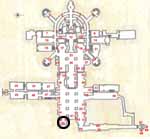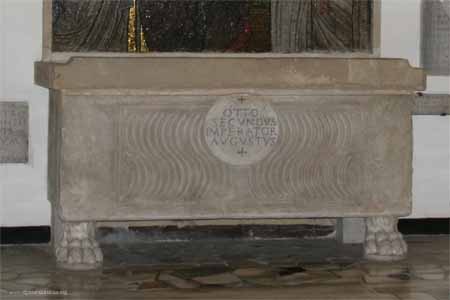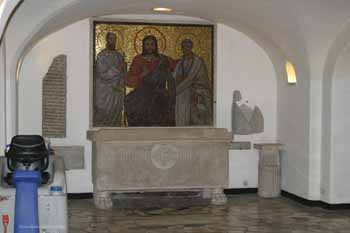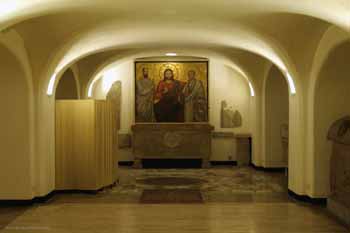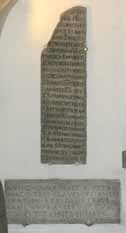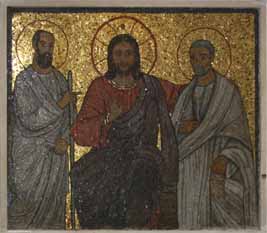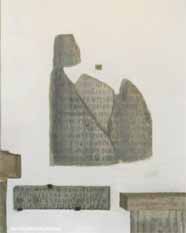| Grottoes
Vatican City Colonnade Saints Floorplan #2 |
| Altars
Monuments The History |
|
|
|
Related
Links
|
|
|
|
|
|
|
|
|
|
|
|
|
|
|
|
The original ornate tomb made from precious marbles, was replaced with a new big sarcophagus. Inscribed on it, were two Latin distichs dictated by the Emperor's friend, Abbot Gerbert, the future Pope Sylvester II. The gigantic porphyry lid came, according to tradition, from the tomb of Emperor Hadrian in his grandiose mausoleum (present-day Castel S. Angelo). On its sides were screens decorated with porphyry and serpentino panels. In 1610, during the demolition of the portico, the sepulcher was opened and the remains were placed in a recently excavated strigilled sarcophagus, where they rest to this day. A marble disc was added at the center with the inscription: OTTO / SECVNDVS / IMPERATOR / AVGVSTVS - Otto II, Emperor August. For a few decades, the porphyry lid remained in the grottoes until the artist Carlo Fontana found a new prestigious use for it: as the new baptismal font of St Peter's, inaugurated in 1694. Above the sarcophagus is a vast mosaic representing Christ Enthroned between Sts Peter and Paul that was located above the emperor's original tomb in the atrium of the basilica. The original 10th century style of the mosaic was altered during restorations. The two Apostles are dressed in white Roman togas with a border, following the ancient fashion. Present in the iconography are several symbolic indications of Peter's primacy in his basilica: the majestic Christ raises His right hand in a gesture of a teacher, while with His left arm He is embracing Peter. In his right hand, attached to a ring, Peter is holding not 2 but 3 keys indicating the power given by Christ to him and his successors, over the peregrine, purifying and celestial church. On the sides of the mosaic are two fragments of inscriptions. To the left is a long medieval list of relics of saints, salvaged in 1610 during the demolition of a small oratory in the atrium of the basilica, close to the tomb of Otto II. Immured to the right is a fragment of an inscription from 1103 reproducing a document concerning the donation made by Matilda of Canossa to Pope Gregory VII, whose name is legible in one of the surviving fragments: GREGORIO PP OMNIA BONA MEA - to Pope Gregory all my possessions.
|
||||||
|
||||||
This independent website is not endorsed by or associated with the Vatican, the Fabbrica of St. Peter's, or any business organization
Contact:
stpetersbasilica@gmail.com
